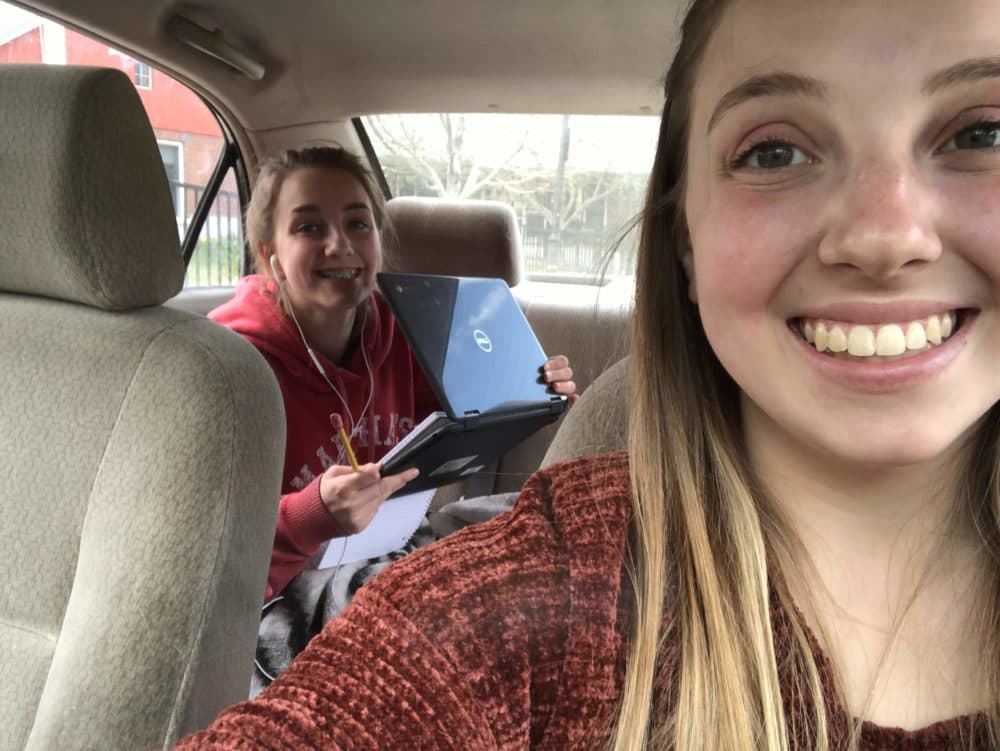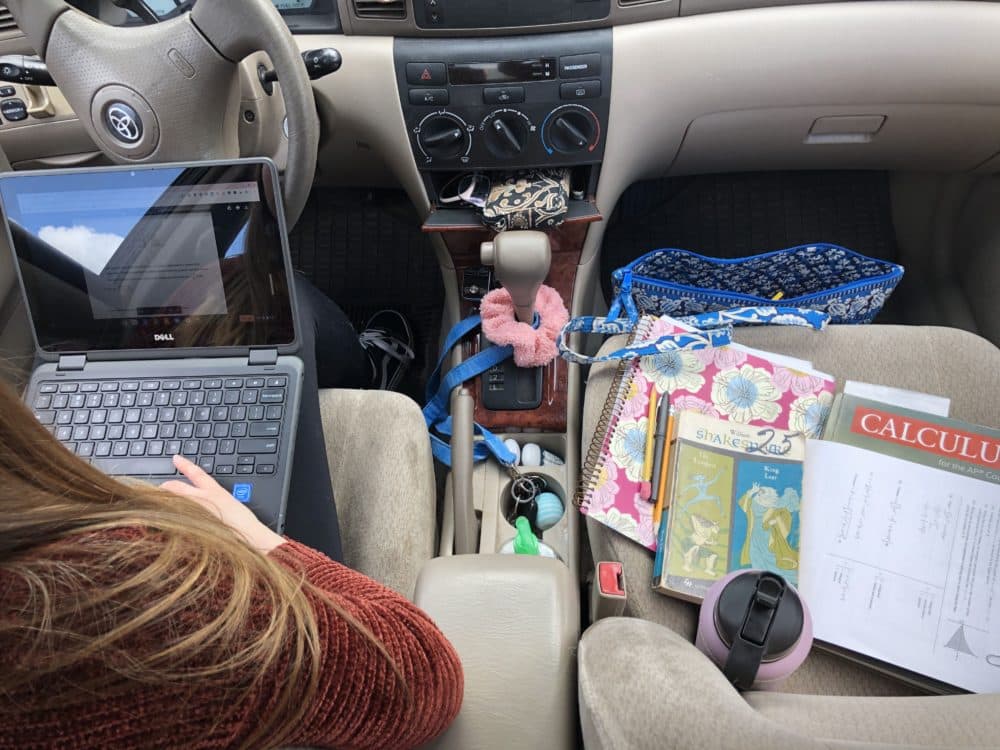Advertisement
Coronavirus Coverage
When Your Remote Classroom Is Your Car: How Some Rural Students Without Broadband Are Connecting
Resume
Even though school is closed, on a given day there are about a dozen cars lined up in the parking lot of Sanderson Academy in Ashfield with people using the school’s Wi-Fi.
Natalie Szewczyk is one of them. The 18-year-old has turned her Toyota Corolla into a mobile work station.
"I stay in my driver's seat. I push my seat all the way back," she explained. "And then I prop my Chromebook on the steering wheel with my work on the passenger seat."
Her sister, who is in 10th grade, usually takes the back seat.
Like many residents from this western Massachusetts community, Szewczyk’s only way to get internet at home is through cell service, and that’s spotty at best. So in order to do school work she has to drive to a Wi-Fi hotspot. Most weekdays, she spends about three hours at this school parking lot.

"It kind of blows my mind that people can wake up and just open their computer, check their assignments, plan out their day and be like, 'Oh I’ll do this [assignment] and then I’ll go on a walk and then I’ll do another assignment and then make lunch," Szewczyk said.
It’s also hard to communicate with teachers if she has a question when she’s finishing work at home.
In the car next to Szewczyk most days is Tracey Pinkham, a social studies teacher at Hampshire Regional High School.
"It’s such a different way to teach and it’s a new normal which is hard to adjust to," Pinkham said. "But I would say my kids’ school and my own school, they've been very understanding."
Two of the five towns served by the Hampshire Regional High School don’t have residential broadband access. Many of those students don’t have access to a car either.

Principal Kristen Smidy is having teachers assign work that can be done without a high speed connection and delivering hard copies of assignments to about 80 students.
"They have had to refer to pages of textbooks or write out instructions or be available via phone," said Smidy. "Because if we only provided opportunities for students to access the curriculum with online resources, then it wouldn't be able to get to every student."
Before schools closed, many people in communities that don't have residential broadband services got work done in local libraries or coffee shops. But now that's not an option. And many school and community leaders worry that the lack of reliable internet access could also lead to learning inequities.
"It's another addition to the long list of inequities that have been laid bare through COVID," said Adam Hinds a state senator from western Massachusetts.
The state has been making progress in closing this connectivity gap since 2008. The Massachusetts Broadband Institute, a public private partnership, has been overseeing projects across the region. Almost every community they have worked with has broadband access in places like schools and libraries. But 36 towns still aren't fully covered yet with residential access.
As a stop gap, the Massachusetts Broadband Institute is setting up hotspots around town to make Wi-Fi more accessible in school parking lots and outside of public buildings.
"We're not stopping even though the COVID crisis is with us,"said Peter Larkin, board chair of the institute. Even still, Larkin added that once schools and businesses are opened up again, having the technology available won’t solve every connectivity issue.
"There's also the affordability issue," he said. "Even if you had it come across your doorway, for some residents it's still a challenge."
Larkin estimates that it will be two to three more years before most households in these 36 in western and central Massachusetts towns will have access to broadband.
This segment aired on May 8, 2020.
